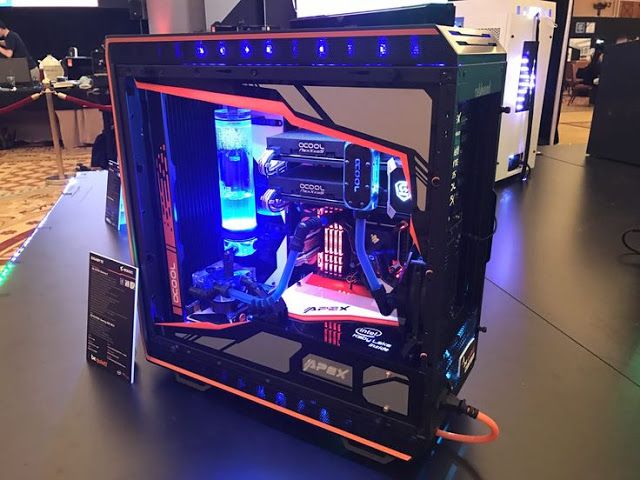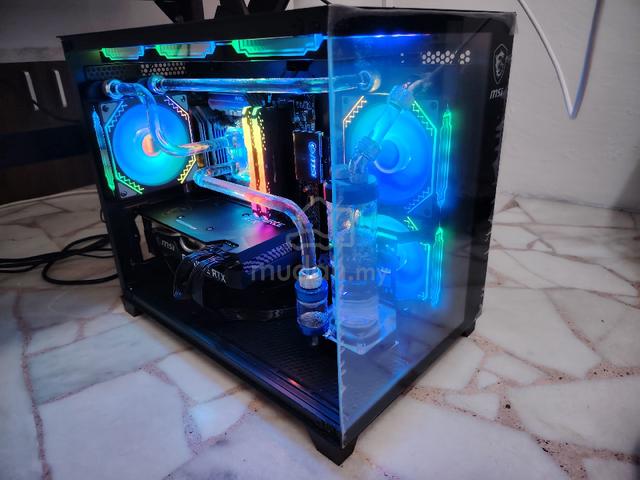
High-performance computing (HPC) environments are critical in various fields, including scientific research, financial modeling, and complex simulations. These systems rely on powerful CPUs (Central Processing Units) to execute massive computational tasks efficiently. However, as with any hardware, CPUs in HPC environments are susceptible to failure. Identifying the symptoms of CPU failure early is crucial to maintaining the performance, reliability, and integrity of these systems.
In this blog post, we will explore the common symptoms of CPU failure in high-performance computing environments, the potential causes behind these issues, and the importance of proactive monitoring and maintenance.
1. Unexpected System Crashes and Reboots
One of the most immediate and noticeable symptoms of a failing CPU is unexpected system crashes or reboots. In an HPC environment, where uptime and stability are paramount, a sudden crash can lead to significant data loss, disrupted workflows, and delayed project timelines.
These crashes may occur during high-load scenarios when the CPU is under intense stress, such as during complex calculations or data processing tasks. The system may freeze, display a blue screen of death (BSOD) in Windows environments, or reboot without warning. If these crashes become frequent and unexplainable by software issues, the CPU might be at fault.
2. Degraded Performance and Sluggishness
HPC systems are designed for peak performance, and any degradation in speed or responsiveness can be a sign of CPU trouble. A failing CPU may struggle to handle tasks that it once managed with ease, leading to slower processing times and increased latency.
Degraded performance can manifest in several ways, including:
- Longer execution times: Tasks that previously completed within minutes may now take hours.
- Increased application load times: Software applications may take longer to start or respond.
- Inefficient multitasking: The system may struggle with running multiple applications simultaneously, leading to noticeable delays and unresponsiveness.
Such performance issues could be due to thermal throttling, where the CPU reduces its clock speed to prevent overheating, or due to physical damage to the CPU’s cores or transistors.
3. Overheating and Thermal Issues
Overheating is a common cause of CPU failure and a symptom that is often overlooked until it’s too late. In HPC environments, where CPUs are pushed to their limits, proper cooling is essential. A failing CPU may exhibit signs of overheating, such as:
- Excessive heat generation: The system may become unusually hot, even during low to moderate workloads.
- Frequent thermal shutdowns: To protect itself from damage, the CPU may force the system to shut down when temperatures exceed safe levels.
- High fan speeds: System fans may run at maximum speed constantly in an attempt to dissipate heat, resulting in increased noise levels.
Overheating can be caused by inadequate cooling solutions, dust accumulation, failing thermal paste, or a malfunctioning CPU itself. Prolonged exposure to high temperatures can cause permanent damage to the CPU, leading to failure.
4. Error Messages and System Logs
System logs and error messages can provide valuable insights into the health of a CPU. In an HPC environment, monitoring tools and logging systems are often in place to track system performance and identify potential issues. Common indicators of CPU failure in logs include:
- Machine Check Exceptions (MCE): These are hardware error reports generated by the CPU when it detects a fault. Frequent MCEs can indicate a failing CPU.
- Checksum errors: Errors related to data corruption or memory access violations may point to issues with the CPU.
- Core dumps and kernel panics: In UNIX-based systems, a core dump or kernel panic may occur when the CPU encounters a critical error.
Reviewing these logs regularly can help identify early signs of CPU failure, allowing for timely intervention before a complete system breakdown occurs.
5. Unstable Overclocking
In HPC environments, overclocking is sometimes employed to squeeze additional performance out of CPUs. However, unstable overclocking settings can lead to CPU failure. Symptoms of unstable overclocking include:
- Frequent crashes: The system may become unstable and crash under heavy loads.
- Inconsistent performance: The CPU may fluctuate between high and low performance, causing erratic behavior.
- Failed boot attempts: The system may fail to boot or require multiple attempts to start up.
If these symptoms arise after overclocking, it may be necessary to revert to default settings or fine-tune the overclocking parameters to prevent long-term damage to the CPU.
6. Visual Artifacts and Display Issues
Though more commonly associated with GPU (Graphics Processing Unit) problems, visual artifacts and display issues can also be indicative of CPU failure in HPC systems. This is especially true in environments where the CPU handles graphics processing tasks. Symptoms include:
- Screen flickering or tearing: Visual disturbances during high-resolution rendering or video playback.
- Graphical corruption: Distorted or missing images, textures, or colors in software applications.
- Monitor display issues: The screen may go blank, or the system may fail to recognize connected displays.
These issues can be caused by a failing integrated graphics processor (iGPU) within the CPU or by the CPU’s inability to communicate effectively with the GPU.
7. Corrupted Data and File System Errors
Data integrity is crucial in HPC environments, where even minor errors can have significant consequences. A failing CPU may cause data corruption, leading to:
- File system errors: Inconsistent or unreadable files, missing data, or failed write operations.
- Application crashes: Software applications may crash unexpectedly due to corrupted data.
- Inaccurate calculations: In scientific computing, even a small error in data processing can invalidate entire research projects.
If data corruption becomes a recurring issue, it’s essential to investigate the CPU as a potential culprit.

8. Unusual Electrical Behavior
The CPU is a complex electronic component, and any unusual electrical behavior can be a sign of impending failure. Symptoms include:
- Power supply issues: The system may experience power surges, dropouts, or inconsistent power delivery.
- Electromagnetic interference (EMI): The CPU may emit excessive EMI, causing interference with other electronic devices or system components.
- Burnt smell or physical damage: In extreme cases, a failing CPU may produce a burnt smell, indicating electrical damage.
These symptoms often indicate severe hardware failure and require immediate attention to prevent further damage to the system.
Conclusion
In high-performance computing environments, the symptoms of CPU failure can manifest in various ways, from system crashes and degraded performance to overheating and data corruption. Early detection of these symptoms is critical to maintaining system reliability and preventing catastrophic failures.
Proactive monitoring, regular maintenance, and timely intervention are essential to extending the lifespan of CPUs in HPC systems. By understanding the signs of CPU failure and taking appropriate action, organizations can minimize downtime, protect valuable data, and ensure the continued success of their high-performance computing initiatives.
In summary, the key to preventing CPU failure lies in vigilance and a proactive approach to system health. By keeping an eye out for the symptoms discussed in this post, HPC administrators can take steps to mitigate risks and maintain the integrity of their computing environments. If you are interested in learning more about the ideal cpu temp, you may visit their page to learn more.
